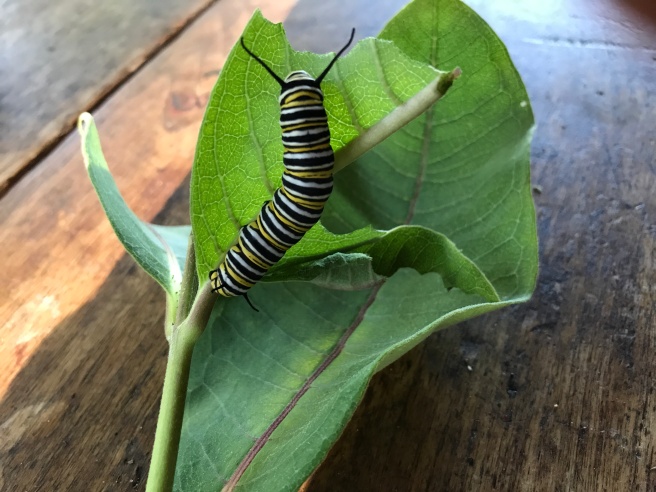Two weeks ago I found a monarch caterpillar on the back of a milkweed leaf in the field across from our home. He was so tiny he was barely noticeable. What a difference two weeks can make. Here is the same caterpillar yesterday.

When I brought this little guy home, it was as an experiment in raising a monarch. I have only seen a few monarchs these last couple of years and know the survival rate of the larva in the wild is less than 10%. I was feeling optimistic about them returning here in greater numbers when I saw that milkweed had taken hold again in the wild edges of the fields.
Little did I know when I started this experiment that it would turn out to be a rescue mission. Here is a picture (taken two days ago) of the same spot where I found the monarch caterpillar.

The farmer had left the field fallow all summer and this past week he decided to harrow it. My caterpillar, and any of his siblings, would have lost their chance to continue on into future generations. Meanwhile, my rescued one should be making his cocoon any day now, if his size is anything to go by.
This is not a new or unusual story. Farmers plow their fields and wildlife gets destroyed in the process. (I’ll tell you about the plight of the nesting bobolinks next spring.) What this does do, however, is recommit me to leaving the borders of our field wild so that we don’t play a part in the demise of any vulnerable species struggling for their survival.
